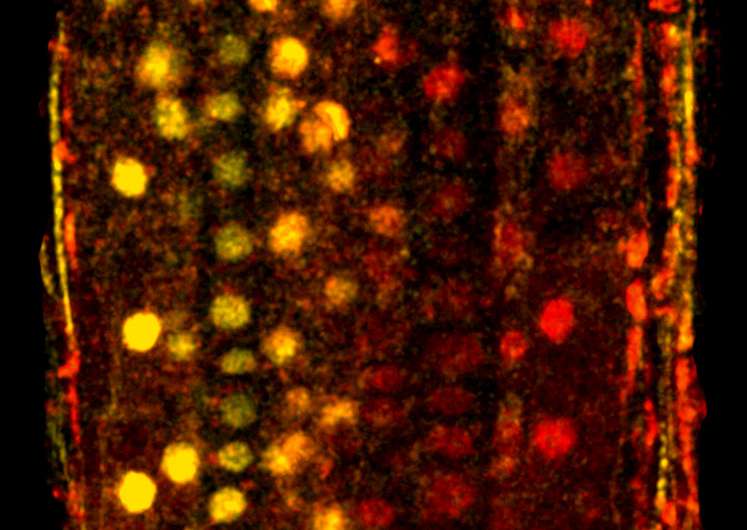Cause or consequence? Scientists help to settle an epigenetic debate

New research findings by John Innes Centre (JIC) scientists have helped to settle an important debate in the field of epigenetic inheritance.
Using the flowering plant Arabidopsis thaliana as a model for their research, Professor Martin Howard, Professor Caroline Dean and members of their labs, have been trying to understand how organisms 'remember' past events at the cellular level.
Previous work showed that expression of a gene called FLC - a 'brake' to stop plants flowering until after winter - is repressed by cold exposure. Furthermore, the amount of repression is epigenetically 'remembered' after winter to permit flowering at the appropriate time. In many organisms, DNA is packaged around histone proteins to make a structure called chromatin. Intriguingly, the level of FLC repression is correlated with the level of cold-induced chemical modifications to the histones at the FLC gene, added by a protein complex called Polycomb Repressive Complex 2.
But are these histone modifications or other local features of the chromatin the cause of epigenetic memory, or are they a consequence of memory stored elsewhere? The findings of a new study published in the journal eLife provide compelling evidence that has helped to settle this long-standing debate.
Professor Martin Howard explains: "We engineered plant cells to contain two distinguishable copies of FLC - when one copy of the gene is expressed it generates a protein that glows red; when the other copy is expressed a yellow fluorescent protein is made. If epigenetic memory was inherited via the action of proteins freely diffusing inside a cell, then these proteins would affect both copies of FLC equally. As a result, either both copies of the gene would be expressed, leading to cells glowing red and yellow, or both copies of the gene would be repressed, giving cells that don't glow at all."
However, in these experiments, which were carried out by PhD student Scott Berry, cells glowing only red, or only yellow, were also observed, and this pattern of expression was epigenetically inherited through many cell divisions.
Professor Howard said: "The fact that two FLC copies in the same cell can have different heritable expression states shows that it is the local chromatin which must hold the epigenetic information passed from parent to daughter cells."
Although a flowering plant was used as the 'vehicle' to demonstrate these findings, epigenetic memory involving the Polycomb Repressive Complex can be found in many other organisms too. In particular, misregulation of Polycomb has been implicated in human cancers, thus these findings could have wide implications.
More information: The paper 'Local chromatin environment of a Polycomb target gene instructs its own epigenetic inheritance' is available online at: elifesciences.org/content/4/e07205
Journal information: eLife
Provided by Norwich BioScience Institutes



















